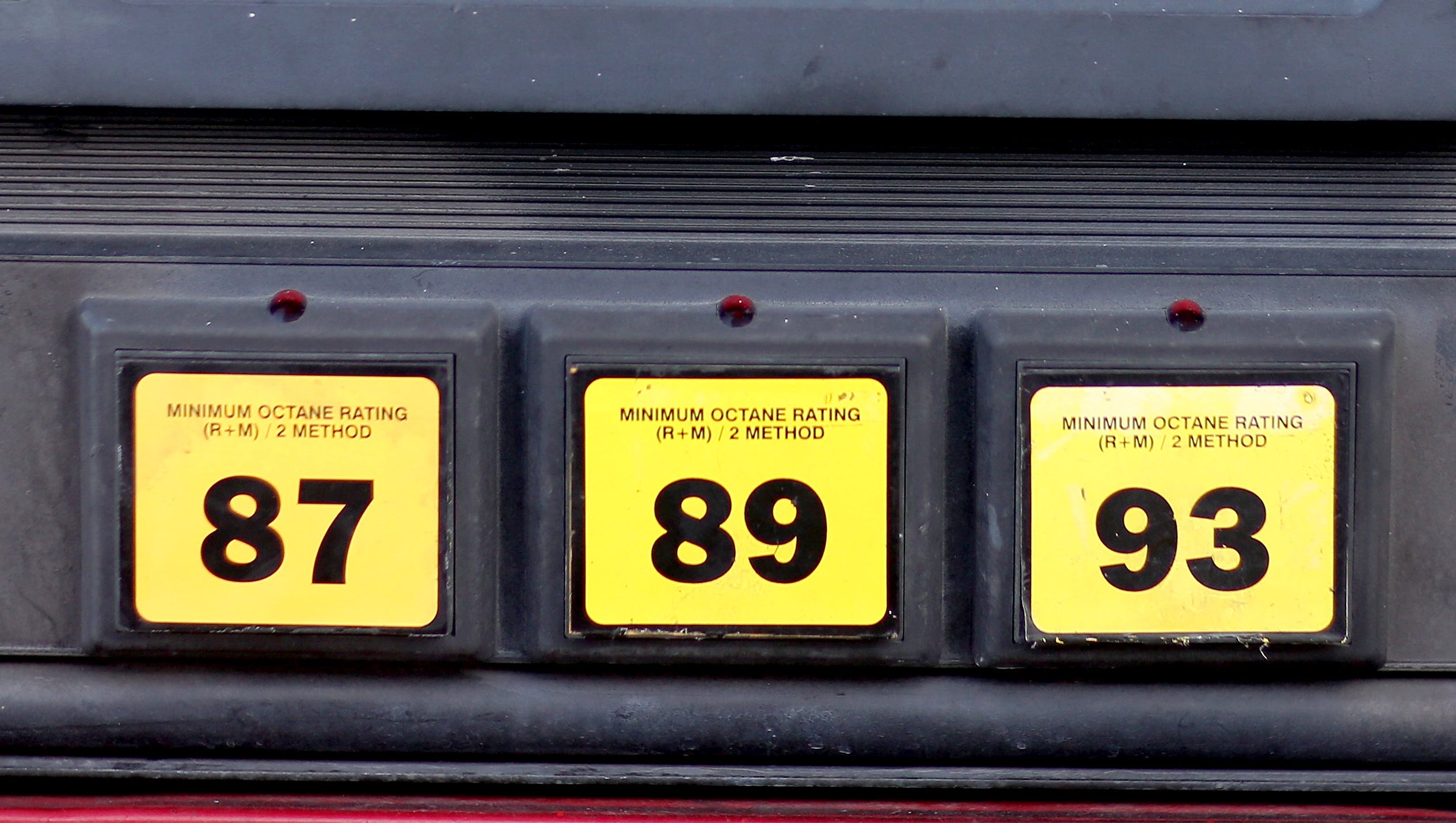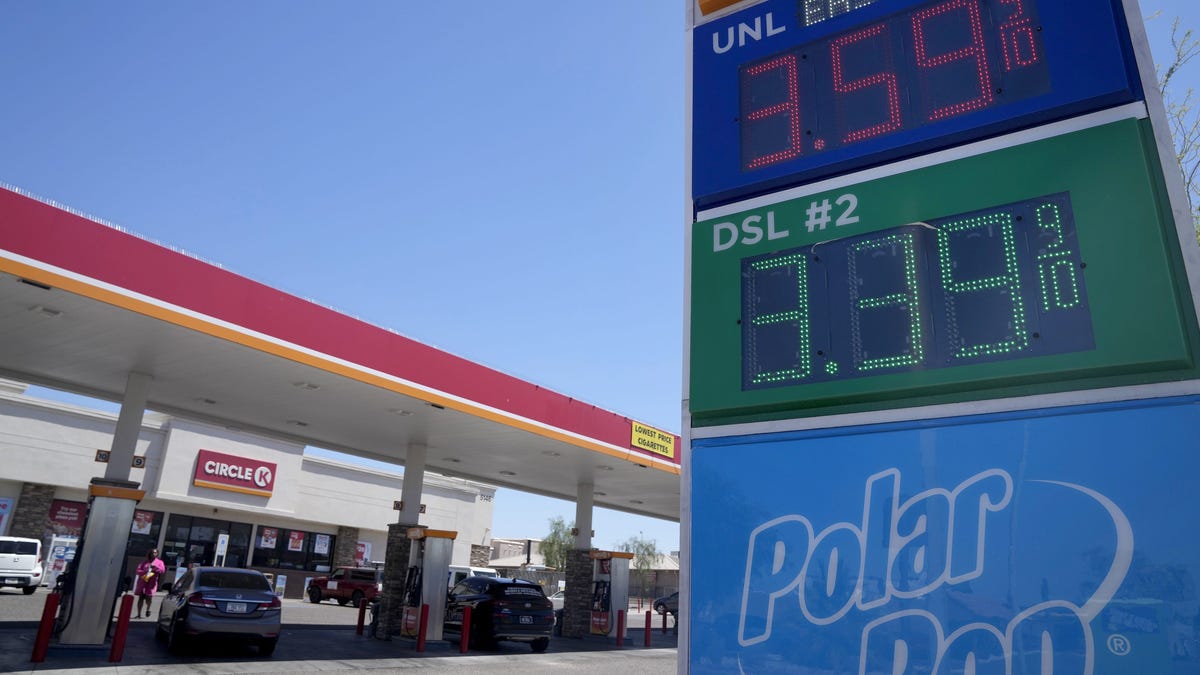
What drives gas prices? Understanding the complex factors
Gas prices are highly sensitive to changes in supply and demand. Natural disasters like hurricanes that disrupt oil production and refining, or sudden increases in demand, can cause sharp price spikes.
Kinder Morgan and Phillips 66 plan to build a new gasoline pipeline from Texas to Southern California.The pipeline will deliver up to 200,000 barrels of gas a day to Arizona, more than existing infrastructure in a state with no refineries.Environmental advocates question the need for expanding fossil fuel resources a time when greenhouse gases from those fuels are worsening climate change.
A new pipeline would bring petroleum from Texas to Arizona, but it raises questions about land use, safety and the future of fossil fuels in the Southwest.
The Western Gateway pipeline, a project of Kinder Morgan and Phillips 66, will run from the Texas panhandle through Arizona to Southern California, delivering petroleum products to cities like Phoenix along the way. It comes just a few months after a natural gas pipeline was approved to run across the state.
The companies say the Western Gateway pipeline will fill a gap, supplying Arizona, a state with no oil refineries of its own, with a valuable resource. Much of the state relies on gasoline coming in from California, where many oil refineries are shutting their doors, leaving the state vulnerable to outages.
Earlier this year wildfires in California caused widespread power outages, shutting down two pipelines that send fuel east.
All the while, Arizona’s fuel and energy demand is surging, and the Western Gateway Pipeline promises 200,000 barrels of gasoline a day, nearly double the amount Phoenix gets from an existing pipeline.
The Arizona Corporation Commission expects to see continued investment in oil and gas pipelines in the state, according to Douglas Clark, the commission’s executive director. With every new pipeline built, communities worry what the unexpected costs on the environment and residents could be.
Documents show accidents, but a good overall track record
Kinder Morgan, one of the companies involved in the project, already owns several pipelines in Arizona. Its West Line runs from California to Phoenix, and the East Line runs from Texas to Phoenix. The company has been operating in the state and across the west coast for decades, though not without some trouble.
In 2006, the Department of Transportation’s Pipeline and Hazardous Materials Safety Administration issued a corrective action order, requiring the company to address integrity issues along the entirety of its 3,900-mile Pacific Coast pipelines after a rise in pipeline incidents. Over the span of three years, the company had 44 accidents across its west coast operations, 14 of which resulted in petroleum products leaking into environmentally sensitive areas and major transportation corridors.
Kinder Morgan made headlines in 2021 when one of its gas pipelines in Coolidge exploded near a farmhouse killing a man and his 14-year-old daughter, and injuring one more. A 2023 federal investigation revealed that gaps in protective tape led to corrosion and damage along a seam weld. The report concluded that Kinder Morgan listed an incorrect kind of protective coating around the pipe in its own database, likely because it underestimated the risk.
Two years later, a leak was found in another Kinder Morgan pipeline, causing the company to halt deliveries of gasoline and diesel from Los Angeles, where the spill was discovered, to Phoenix and Las Vegas.
Because the Western Gateway project is in early stages of planning, Kinder Morgan couldn’t directly respond to questions about safety measures in an email exchange with The Arizona Republic, but referenced the project details and safety accolades listed on the website, and the standards put in place by the Department of Transportation’s safety administration.
The Arizona Office of Pipeline Safety also inspects pipelines while they are under construction and later, once they are in service.
Oil dependence and fossil fuel use
Some environmental advocates worry that pipelines like Western Gateway won’t just fuel cars and trucks, but also a changing climate.
“You don’t just build a pipeline for a few years,” said Sandy Bahr, director of the Sierra Club’s Grand Canyon chapter. The average lifespan of an oil or gas pipeline is around 50 years. At 1,300 miles long, the Western Gateway pipeline would be a significant investment in Arizona’s fossil fuel future. ”We should be weaning ourselves off of gasoline and investing in alternative transportation.”
But under President Donald Trump, alternatives are harder to come by — the EPA is slashing funding for solar and other renewable energy projects. What’s more, tax credits for electric vehicles expired last month as part of Trump’s 2025 tax reform bill, a move that could disincentivize purchasing EVs and bolster reliance on gas-powered cars.
“ When another pipeline comes into Arizona there should be a cost estimate attached to that pipeline and any implications for Arizona consumers,” said Diane Brown, the executive director at the Arizona Public Interest Research Group.
“We need to think about what happens on both ends of the pipeline, not just the pipeline itself,” Bahr said. On one end, oil refining emits more air pollutants than any other process in the oil industry. On the other, gas stations are the origin of greenhouse gases from car exhaust. “The announcement comes at a time when there is an attitude, at the national level at least, that’s very dismissive of climate change and its impacts.”
Where will the Western Gateway pipeline go?
The pipeline is in preliminary stages. Kinder Morgan and Phillips 66 announced the project’s open season, which clues interested parties and potential customers into the proposal, before any permitting actually begins.
The builders said the pipeline will follow its pipeline predecessors, weaving across Arizona, New Mexico and California where others already exist, using some existing infrastructure.
Along the way it could pass the Mescalero Apache Reservation, Lincoln National Forest, and the Brokeoff Mountains Wilderness Study Area in New Mexico, and Gila River Indian Community near Phoenix.
In the past, communities in New Mexico faced with pipelines worried about land value losses, increasing insurance rates, and damage to their land, according to Teresa Seamster, the chair of the Sierra Club’s Northern New Mexico group.
The project’s website says the pipeline is designed to avoid environmental areas and tribal lands.
Right now, across the affected states, communities and environmental organizations are unsure exactly what the pipeline project could look like and what it could mean for the places they call home.
Sarah Henry covers environmental issues for The Arizona Republic and azcentral. Send tips or questions to sarah.henry@arizonarepublic.com.
Environmental coverage on azcentral.com and in The Arizona Republic is supported by a grant from the Nina Mason Pulliam Charitable Trust.
Follow The Republic environmental reporting team at environment.azcentral.com and @azcenvironment on Facebook and Instagram.
